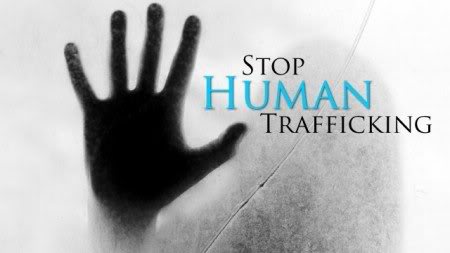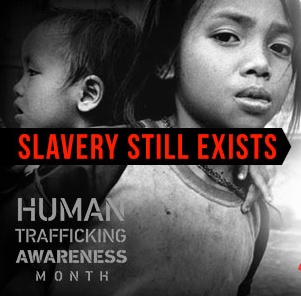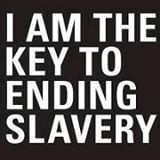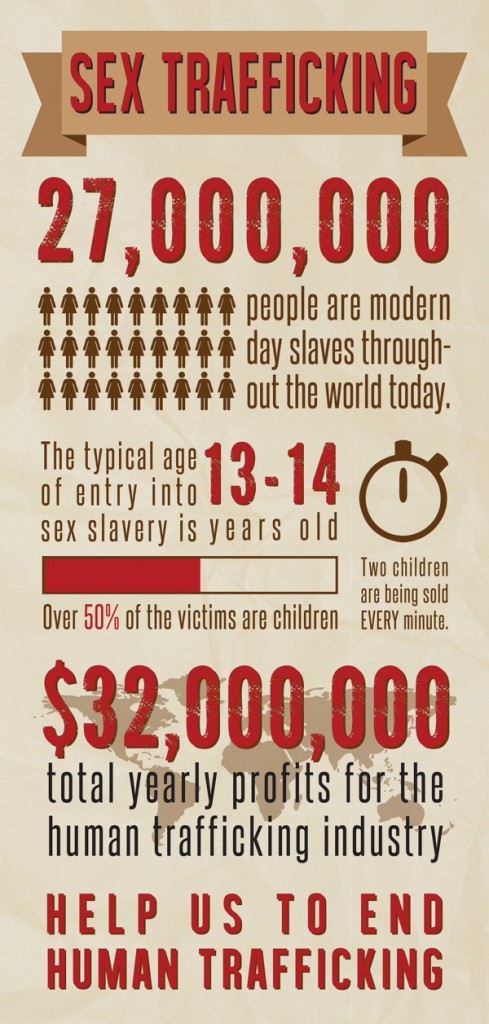When it comes to the term “human trafficking,” what springs to mind for many of us is a disturbing and heart-wrenching, but far-off, reality. We picture human trafficking as an ugly practice that must be stopped in third-world countries. But with January being legally declared “Human Trafficking Awareness Month” in the United States, we must face the fact that it happens all over the world, and to a much larger degree in our own country than we might believe.
It doesn’t get much more “All-American,” than the Super Bowl, right? But a sobering article brings to light the dangerous undercurrent to the famed event in recent years. The Super Bowl attracts millions of viewers, inspires multimillion-dollar commercials and hearty recipes galore—and sets the stage for the “single largest human trafficking incident in the United States.” Prostitutes are brought in from all over the world to be used for men attending the game, and when they are underage, like many are, it is considered human trafficking. This practice happens at large events, sports related or otherwise, all over the United States. Young women, and men, are abducted and forced into a life that often yields no escape.
Human trafficking is defined as a ”modern form of slavery, with illegal smuggling and trading of people, for forced labour or sexual exploitation.” The single largest locations in our country for human trafficking are California and Texas, due to their large immigrant populations and status as international travel hubs. Southern California, with its location close to the border of Mexico, sees a particularly alarming amount.
According to Wikipedia: The findings of the U.S. Department of Justice’s 2011 report, “Characteristics of Suspected Human Trafficking Incidents, 2008-2010,” include:
- From 2008 to 2010, Federal anti-trafficking task forces opened 2,515 suspected cases of human trafficking.
- 82% of suspected incidents were classified as sex trafficking and nearly half of these involved victims under the age of 18.
- Approximately 10% of the incidents were classified as labor trafficking.
- 83% of victims in confirmed sex-trafficking incidents were identified as U.S. citizens, while most confirmed labor-trafficking victims were identified as undocumented immigrants (67%) or legal immigrants (28%).
- 25% of the confirmed victims received a “T visa,” part of a federal program designed to aid victims of trafficking.
These statistics are horrifying. As a people who strive to place human dignity, value and freedom above everything else, we need to know what we can do to help. And though the example above points out the urgent need to dispell the sexual form of human trafficking, take a closer look at the definition of human trafficking: “A modern form of slavery, with illegal smuggling and trading of people, for forced LABOUR or sexual exploitation.” And if labour is part of the definition, what exactly is that labour? And how could we possibly be involved?
To discover your own “slavery footprint,” you can check out this site. As it points out, our attitude may be that our culture has been set free from slavery (or trafficking); we in particular don’t have anything to do with slavery and never would. But if indeed the things we all buy are from “reputable brands! If they were running sweatshops, Oprah would be all over it,” then why would you be reading this article and why would the concept of fair trade even exist? The fact is, the slaves are found in the fileds, the mines, the sweatshops where the goods we buy and use and enjoy every day are produced.
The point of the Website (and this post!) is not to make people feel bad. It’s to make people aware that in the United States, slavery still exists and we as a collective country—producers, enjoyers, and consumers—have not made it a priority to stop it. Does this perspective change some of your pre-conceived notions about what human trafficking is and is not?
Moving forward, we can be more aware and more active by researching the companies we buy from. We can place more of an emphasis on purchasing from ethical companies that meet the Fair Trade standards and buy less from those that don’t. If you’re looking for a good resource or a place to start, you can check out the book 7 by Jen Hatmaker—it contains a list at the end of some of these organizations. And you can write a letter to specific companies you like to buy from, asking them to directly address slavery in their supply chains. In addition, you can check out the Polaris Project (named after the North Star that guided slaves to freedom along the Underground Railroad), for additional information and ways to help on human trafficking in your own city and state. It includes information on the top ten child trafficking industries, including restaurants, strip clubs, and pornography. There are resources listed on ways to fundraise, raise awareness, and volunteer in your own area to fight for those who cannot fight for themselves.
January is Human Trafficking Awareness Month. How are we all going to be aware?
XO,
Casey







